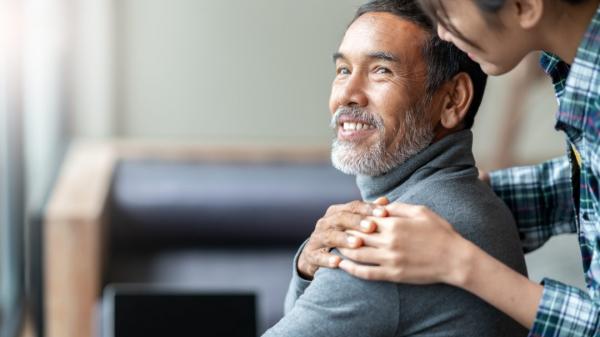
Living with pain can be one of the hardest parts of having rheumatoid arthritis (RA). Understanding pain and learning techniques that may help you cope with pain are an important part of managing your RA.
What causes pain
Pain due to RA can be caused by:
- inflammation, the process that causes heat and swelling in your joints
- damage to the joints
- muscle tension, from trying to protect joints from painful movements.
There may not be a cure for your pain but you can learn to manage it. Try different techniques to find what works best for you.
Pain can be a vicious cycle
The experience of pain is very personal. That is because pain does not occur in isolation but is influenced by many things such as stress, fatigue (tiredness) your mood (anxiety and depression). For example, people who feel depressed or anxious have been found to be more sensitive to pain. This can make your pain feel worse, which can lead to a continuing cycle of fatigue and depression.
The good news is that this pain cycle can be broken by using some of the strategies described below.
What can I do to manage my pain?
Pain may limit some of the things you do, but it doesn’t have to control your life. Your mind plays an important role in how you feel pain. Thinking of pain as a signal to take positive action rather than being scared or worried about it can be helpful. Also you can learn ways to manage your pain. What works for one person may not work for another, so you may have to try different techniques until you find what works best for you.
Here are some things you can try:
- Take medicines wisely. Many different types of medicines can help control the pain of RA. Your doctor or pharmacist can help you understand which medicines are right for you and how best to use them.
- Exercise. Research has shown that regular appropriate physical activity can help reduce pain. It also keeps your joints moving, strengthens muscles to support your joints, reduces stress and improves sleep. A health professional (e.g. a physiotherapist or exercise physiologist) or your doctor can help you work out a program suitable for you.
- Use heat and cold. The benefits of heat and cold for arthritis are yet to be proven by research. However, these treatments are soothing and safe when used carefully. Heat relaxes your muscles and stimulates blood circulation. You could try a warm bath, or place a heat pack or hot water bottle over the painful area for 15 minutes. Cold numbs the painful area and reduces swelling. Applying cold treatments, such as ice packs, to the painful area for 15 minutes may be especially useful for hot, swollen joints, such as during a ‘flare’. You can repeat heat or cold treatments throughout the day. Make sure the temperature of your skin has returned to normal before re-applying, to prevent any tissue damage. Ask your doctor or physiotherapist whether heat or cold is best for you.
- Take care of your joints and save energy. Looking after your joints during your daily activities can help reduce pain, stress and tiredness. It involves simple habits such as: – avoiding activities that cause pain – asking for help when you need it – using special aids and gadgets to make tasks easier. See Fatigue and arthritis.
- Massage. There are limited scientific studies that show massage may temporarily improve pain and mobility of joints and muscles. Make sure the massage therapist has experience working with people who have arthritis. You can find a qualified therapist by contacting the Australian Association of Massage Therapists, or the Institute of Registered Myotherapists of Australia.
- Acupuncture. Acupuncture is an ancient Chinese practice of putting small, thin needles into the skin at specific points on the body to block the pain signal. There is limited evidence about the effectiveness of acupuncture in RA. However some people may find it useful alongside other proven treatments, such as medicines. The Australian Acupuncture and Chinese Medicine Association can help you find an accredited practitioner.
- Transcutaneous electrical nerve stimulation (TENS). A TENS machine applies very mild electric pulses to block pain messages going from the painful area to your brain. TENS can be useful for longer-term pain but does not work for all people. See a physiotherapist to trial a TENS machine, and to learn how to use it correctly, before you buy one.
- Mind techniques. A trained professional, such as a psychologist, can help you learn relaxation and pain coping skills so you can better manage your pain. Some of these techniques include:
- Relaxation: Relaxation techniques, such as deep breathing, guided imagery (mental pictures) and progressive muscle relaxation, can help you reduce stress and muscle tension. These techniques need to be practised and you may have to try several methods before you find one that works for you. You may find it helpful to use recordings, CDs and book to help you learn relaxation techniques.
- Mindfulness Based Stress Reduction: This is a structured program developed at the University of Massachusetts Medical School. It helps you become aware of thoughts that may be exaggerated or unhelpful and then how to respond to them.
Contact your local Arthritis Office for details of self management courses that can teach you these techniques. You may also find it useful to see a psychologist to learn other mind techniques to help you cope with pain.
CONTACT YOUR LOCAL ARTHRITIS OFFICE FOR MORE INFORMATION AND SUPPORT SERVICES.











